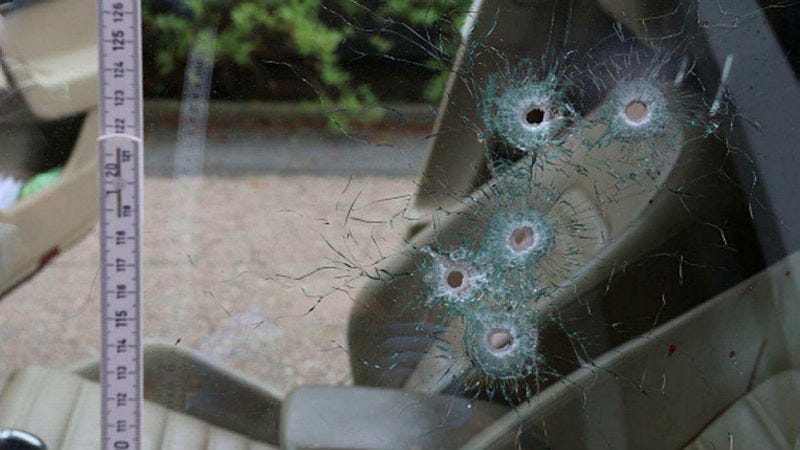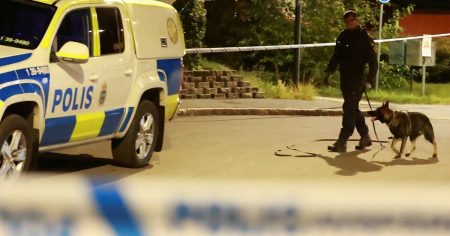In the early hours of an August morning in 2023, a chilling execution unfolded in Helsingborg, Sweden. A young man sitting in his parked car was shot five times by a teenage boy, the bullets piercing his head, neck, and chest. He died instantly at the scene. The perpetrator, identified as a runner for the Växjö gang Nätverk D, was apprehended shortly after fleeing the scene on an electric bicycle. He was found with Tramadol in his system and a loaded pistol tucked into his waistband. Critically, the magazine contained several rounds of ammunition manufactured for the Swedish Armed Forces, and five spent casings of the same military-grade ammunition were recovered at the crime scene, matching the number of bullet holes in the car’s window. The prosecutor, Magnus Larsson, confirmed the fatal shot came from a military round, known as the m/39B or ”39 Bertil”. The subsequent court proceedings determined the murder to be a premeditated and meticulously planned assassination.
The investigation into the Helsingborg murder unveiled a disturbing trend: the increasing prevalence of military-grade ammunition in gang-related violence. The pistol used in the assassination was linked to other shootings in the city, including one targeting the victim’s brother, who survived the attack. The m/39B round, designed for the now-phased-out Kulsprutepistol 45 (Kpist m/45) and still used in the Pistol m/88, is a full metal jacket round with a hardened steel shell, some variants incorporating a penetrator core. This construction allows it to pierce light armor and body protection, making it especially lethal. Prosecutor Larsson expressed concern over the inherent danger posed by this type of ammunition in the hands of criminals. The case highlighted the urgent need to address the flow of military-grade ammunition into the criminal underworld.
Several other incidents further underscored the widespread use of military ammunition by criminal networks. In May 2023, police discovered a hidden cache of weapons, including 28 military rounds and a balaclava, in a wooded area south of Stockholm. A 15-year-old boy, linked to the Bredäng network, was apprehended at the scene. Analysis confirmed one of the weapons had been used in a recent shooting at a residence in Sätra. At the end of 2024, a 34-year-old man in Skåne was sentenced to several years in prison after police found two weapons and three magazines filled with 29 military rounds in a storage unit. A relative testified the man had confessed to ”committing acts” using these weapons. These separate incidents demonstrated the reach of military-grade ammunition within the criminal landscape, extending beyond individual gangs and across geographical areas.
Even more alarmingly, the presence of m/39B rounds was detected in a counter-terrorism operation. In the spring of 2024, Swedish Security Service (Säpo) conducted raids in Tyresö following wiretaps of a local basement mosque. Intercepted conversations revealed three terror suspects discussing firearms, one mentioning he had acquired Swedish military rounds with ”full metal jacket”. While no ammunition was seized, prosecutor Lars Hedvall asserted the suspects were discussing m/39B rounds, known for their ability to penetrate standard body armor without additional plates. The Säpo investigation concluded the suspects were aware of the ammunition’s properties and deemed them suitable for their purposes due to their high penetration capability. This incident raised significant national security concerns, demonstrating the potential for military-grade ammunition to be used in terrorist activities.
The recurring appearance of m/39B rounds in criminal investigations begged the question of their origin. Kristian Malzoff, head of the National Firearms Centre, confirmed the frequent seizures of this particular ammunition, primarily in gang-related contexts. He noted the ammunition often dates back several decades, largely originating from the late 20th century when military downsizing resulted in the disposal of surplus ammunition. It is believed these rounds were donated to various defense and shooting associations during the 1990s, somehow finding their way into the black market. While the police acknowledge the regular appearance of m/39B rounds, they do not maintain specific statistics on these seizures. Videos purportedly showing a stockpile of military ammunition transported by criminals to Norway further underscored the extent of the problem.
The Swedish Armed Forces and the Swedish Defence Materiel Administration (FMV) have engaged in a circular blame game regarding the leaked ammunition, each deflecting responsibility to the other. The military pointed to the FMV, which handles the disposal of military equipment, while the FMV countered that the military was responsible for the original donations. Malzoff, although concerned about the use of military ammunition in violent crimes, downplayed its impact on the overall issue of gun violence, suggesting criminal networks would find alternative sources. He stressed the importance of citizens reporting any discoveries of old military ammunition to the police, particularly during the clearing of storage spaces or estates, emphasizing the need to remove as much of it from circulation as possible. Despite the ongoing concern, police are not actively pursuing specific operations to locate and confiscate these rounds, believing the leaks occurred too long ago to be effectively traced. They maintain there is no evidence of newly manufactured rounds entering the criminal market.














